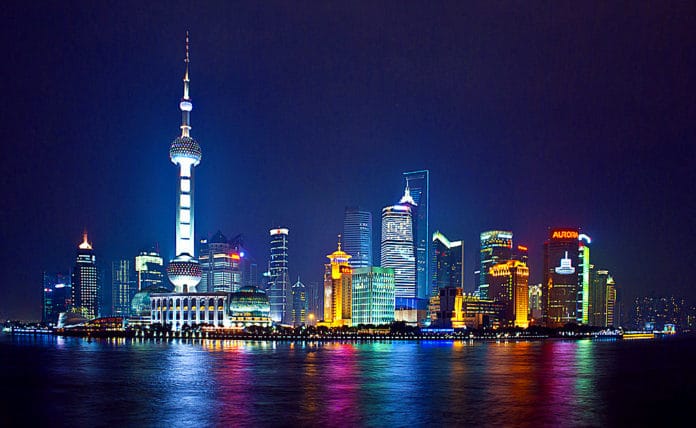Emerging markets investments is always volatile market sector but typically, emerging market countries have low to medium per capita income and are beginning to grow to participate more fully in world economic markets. Both big countries such as China and small countries like Tunisia are emerging markets. With greater volatility, less stability and superior growth potential than developed markets, emerging market investing requires patience and a strong stomach. But which are the best countries that may offer investors big rewards and what are the latest regions that are attracting growth and confidence?
Chinese Growth
The World Bank puts China’s growth at 6.4 percent this year, while the Federal Reserve Bank forecasts a 2.8 percent U.S. median GDP growth rate this year. Asian emerging markets provide exposure to high-growth information technology companies. To capture the China emerging markets play, consider a broad based emerging markets ETF such as the iShares MSCI Emerging Markets ETF with 7.46 percent invested in China. Or, select one of the 47 China sector funds such as the SPDR S&P China ETF , which tracks the total return of the S&P China BMI Index.
India Growing Global Importance
The World Bank projects India’s GDP growth to reach an impressive 7.3 percent growth rate in 2018. Like China, this country is also becoming more of a consumption economy. Other evidence of India’s importance as a growing emerging market is its 8.1 percent weight in the MSCI Emerging Markets Index, says Clem Miller, portfolio manager for Wilmington Trust Advisors in Baltimore. For broad exposure to India Stocks , try the iShares MSCI India ETF (INDA) with exposure to 79 large- and mid-cap Indian companies. The INDA has an expense ratio of 0.68 percent, or $68 per $10,000 invested annually.
Profit from reforms in Thailand.
The World Bank’s Thailand Economic Monitor expects the country to post 4.1 percent growth in 2018, the best performance since 2012. Ulrich Zachau, World Bank director for Thailand, Malaysia and regional partnerships, projects that education and skills reform as well as infrastructure investments will boost Thailand’s innovation onto a path of higher future growth. Additionally, the country’s 20-year national strategy research initiatives strive to improve intellectual property rights and establish a national data policy to become a high-income nation. For coverage of major Thai companies, the iShares MSCI Thailand ETF (THD) holds 120 stocks and offers a 2.27 percent yield.
Brazil Bargain Times But Risky
Brazil has been fraught with corruption and economic problems. Multiple leaders are being investigated for corruption and the income inequality is massive. Yet, after a two-year recession, Brazil’s growth rebounded to 1 percent in 2017. For 2018, Brazil projects more than 3 percent GDP growth, but the International Monetary Fund is sticking with 1.5 percent. If you want to take a gamble on Brazil’s growth prospects, the iShares MSCI Brazil ETF (EWZ) is a diversified low-ish fee fund. The ETF holds 54 companies and trades at a 2.72 percent discount. That means you can buy shares for less than the value of the underlying company stocks.
Avoid specific Russian funds
Despite a recent economic rebound with higher oil prices and growing macroeconomic stability, Russia’s recent 2017 peak 3.1 percent growth is expected to slow. Growth prospects through 2020 are forecast by the World Bank to remain between 1.5 and 1.8 percent. Due to projected slowing growth you might want to stay away from individual Russia funds. Eric D. Nelson, managing principal at Servowealth in Oklahoma City, recommends “buying the emerging markets index, or a total international index that includes emerging markets stocks, as a sensible way to invest.” He maintains that this investment approach will outperform those trying to select and time their way to outperformance.
Taiwan- Play The Waiting Game
Taiwan s one of the wealthiest economies in Asia. Despite efforts to decrease dependence on China and grow commerce with other Asian nations, you might want to wait before investing in this Asian country. Taiwan’s economy is propelled by industrial manufacturing, primarily exports of electronics, machinery and petrochemicals. And it enjoyed a robust 6.82 percent growth rate from 1962 until 2018. Trading Economics reports that the Taiwanese economy grew only 3 percent in the first quarter of 2018. A leading think tank, Taiwan Institute of Economic Research, forecasts 2018 GDP growth at 2.45. With lower than normal growth, consider waiting to invest in Taiwan until signs of robust growth return.
Emerging Index Funds
Many financial professionals recommend investing more broadly with a diversified emrging index fund. Cherry-picking winners and losers is a delicate operation, fraught with the possibility of failure. Joshua Escalante Troesh, financial planner and founder of Purposeful Strategic Partners in Rancho Cucamonga, California, believes that most investors should stick with a diversified emerging markets fund unless the investor has a large portfolio. “An investment in emerging markets is more susceptible to country or region-specific risk, and a fund which invests more narrowly could be hit hard in a country-specific or regional downturn,” he says.





















